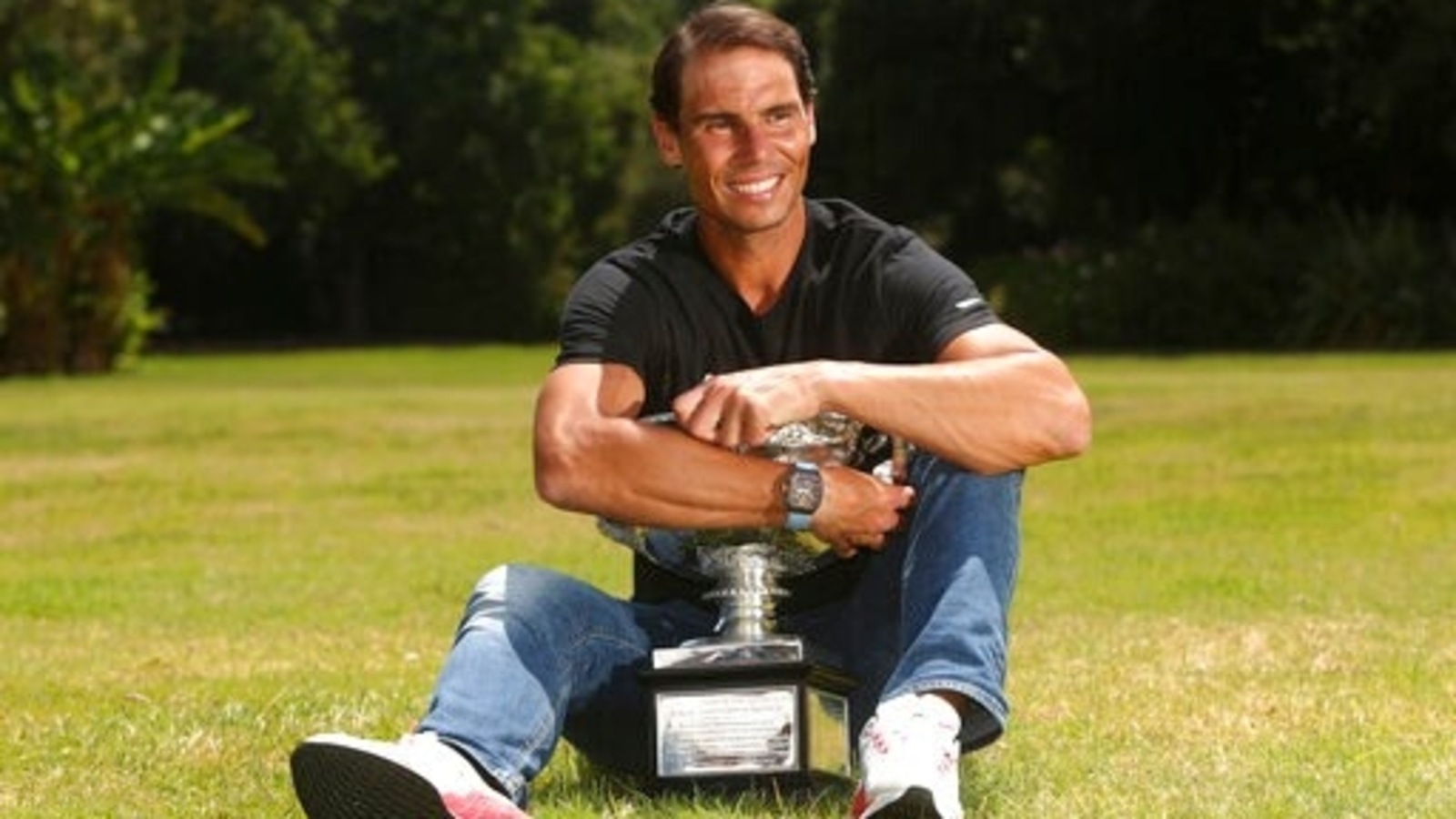Announcing his decision through a social media video that he was ending his 2021 season in August, Rafael Nadal highlighted that the chronic foot injury was the same one he had been dealing with since 2005—since he was 18 years and one Grand Slam old.
Seventeen years later, Nadal is still suffering from the issue. And still winning Grand Slams. A record 21st ticked off in Melbourne recovering from it.
Nadal and injuries go as long a way back as his GOAT-level success. Even before he won his first Grand Slam at the French Open in 2005, the floppy-haired teen prodigy with a physically taxing playing style had been pegged back by physical problems; be it his elbow, ankle, or in the same year, foot. Few other body parts of the Spaniard were left untroubled thereafter: both knees, both wrists, hamstring, hip, abdomen, even appendix.
Almost every time one of the above injuries flared up, questions were raised about Nadal’s longevity in a sport that demands peak fitness, especially in best-of-five Grand Slam matches. Each time Nadal pressed the resume button, not just to play on but to hunt down opponents.
The latest episode in Nadal’s setback-to-success series is perhaps the biggest blockbuster. For starters, consider his age. At 35, the Spaniard underwent another lengthy recovery process for his painful left foot condition that halted his 2021 season early. Even in an injury-riddled career, Nadal has rarely been off the tour for five straight months—one of the longest lay-offs before this was in 2012, when he ended the season after Wimbledon—like he did last year, battling retirement thoughts. There was the added Covid complication in December.
Yet, Nadal was out of the blocks in 2022, winning an ATP 250 event before the Australian Open. In the 10 hardcourt matches in Melbourne this month, the “King of Clay” was undefeated.
“If we put everything together—the scenario, the momentum, what it means—yeah, probably the biggest comeback of my tennis career,” Nadal said in the post-match press conference after beating Russian world No 2 Daniil Medvedev in a five-and-a-half hour, five-set final.
Gritty comebacks from lengthy injury layoffs aren’t novel to Nadal; finding top-notch rhythm and instant results on return is.
Perhaps the closest to this all-defying moment of triumph was the 2013 season when Nadal returned from a major knee injury, not having played a competitive match since June 2012. He withdrew from the 2013 Australian Open citing a stomach bug and lost an ATP 250 final in Chile before bossing the clay season all the way to the French Open, his favourite tournament and surface. But this was Australian Open, on fast hard courts, a tournament and surface he has tasted least success in.
In 2015, coming off a season grappling with wrist and appendix problems (the latter needed surgery) that sidelined him from October 2014, Nadal struggled to patch together a consistent run. He lost the season’s first match in Doha, and in the quarter-finals at Australia and Paris. Those were his best Grand Slam finishes that season as Nadal, for the first time, went a year without a Major since his maiden title in 2005. Ditto 2016, he pulled out of the French Open mid-tournament due to a left wrist injury and shut shop in October. Nadal sizzled in the Australian summer the following season too, but lost to Milos Raonic in the quarter-finals in ATP Brisbane and Roger Federer in that epic Australian Open final.
That 2017 season provided ample proof that Rafa’s flight (and fight) was nowhere close to crash landing, even into his thirties. Most experts—and his doctors in 2005, according to Nadal—believed his brutal style of play from the baseline that involves running after every ball like his life depended on it and then bludgeoning it would burn out his body sooner rather than later.
Those signs kept cropping up with frequent injuries, but Nadal kept shutting them down.
A significant factor in Nadal’s physical durability in the latter half of his career is the addition of compatriot and former world No 1 Carlos Moya to his coaching team in December 2016. While his uncle and coach Toni took a backseat, Moya gradually took over. He began easing the volume of physical stress Nadal was putting himself through day in and day out in the gym and in training sessions, apart from reducing his number of tournaments.
“You have to change things. Training systems, for example, or the frequency of those workouts,” Moya said in 2018. “At this point in his career it will not change anything to train one hour more per day. On the contrary, it will be more harmful than beneficial.”
This Nadal is a bit different from that sleeveless one with bulging biceps out to own every minute of his tennis career. Having made one of the most inspiring comebacks in sport, the Spaniard wants to enjoy every minute of his remaining tennis career.
“At the latter stages of your career, I think you enjoy these moments more because you know the chances are less,” he said.
The Grand Slam count, though, is only increasing.
This news is republished from another source. You can check the original article here



